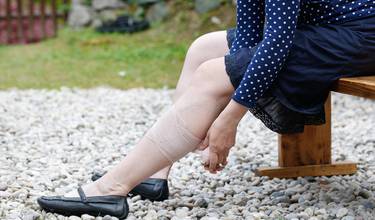Venous leg ulcers are wounds on the leg, usually caused by trauma or poor circulation. Normally a leg ulcer heals within 2 to 3 weeks. If the healing process takes longer than six weeks, it is defined as a chronic leg ulcer. Within the UK, approximately 1 in 500 are affected by venous leg ulcers. Approximately half of all patients with this condition are similarly diagnosed with diabetes.
Why does diabetes affect healing in a negative way?
Diabetes causes a heightened level of sugar in the bloodstream. This, in combination with a reduced blood supply or pressure ulcers, occurs due to a decrease in sensitivity some diabetic patients may experience, can prevent the wound from healing. However, current research has shown that blood sugar is not the only factor affecting wound healing; a reduced metabolism within the cells, surrounding the wound, similarly affect the healing process. This discovery could alter the current treatment of diabetic venous leg ulcers by aiding in the development of new drugs, directly targeting the cells involved in the healing process. German scientists are currently investigating, how this discovery could help diabetic patients with chronic venous leg ulcers.
How can you promote the healing process?
To expedite the healing process, it is important to ensure proper blood flow and circulation. This can be achieved through the use of compression hosiery and by elevating the affected area above the heart. By doing so the blood can easily flow to and from the lungs, ensuring an optimal supply of oxygen to the ulcer which is vital for the healing process. Additionally, it is important to keep the wound clean, to avoid infections that can further delay the healing process.
The signs of infection are:
- Increased redness
- Swelling
- Odour from the ulcer
- Heat from the ulcer
Are venous leg ulcers preventable?
Venous leg ulcers can be prevented by:
- Regular exercise, stimulation healthy blood circulation
- Keeping your feet warm
- Check your legs, on a regular basis, for changes in skin colour or lesions
- Use compression hosiery during extended travels
- Switch regularly between a standing and a sitting position.
- Avoid crossing your legs when sitting.








